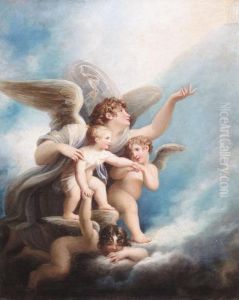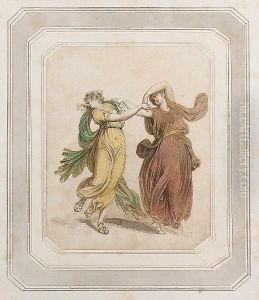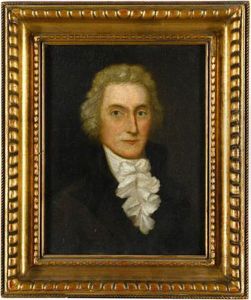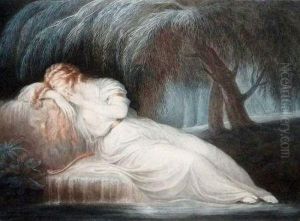Maria Cosway Paintings
Maria Luisa Caterina Cecilia Cosway, professionally known as Maria Cosway, was a multifaceted artist born on June 11, 1760, in Florence, Italy. The daughter of a Swiss father and an Italian mother, she demonstrated a keen interest in the arts from a young age. Her family moved to England when she was a child, where she would eventually become a prominent figure in the London art scene.
Maria Cosway was not only a talented painter but also an accomplished musician and educationalist. She received her early education at a convent in Italy and continued her artistic training in England. In 1781, she married Richard Cosway, a well-known portrait painter and member of the Royal Academy. This marriage introduced her to many significant figures of the time and allowed her to establish her own reputation as a skilled artist.
Throughout her career, Cosway exhibited a wide range of artwork, including portraits, subject pictures, and miniatures. She became known for her delicate and refined style, which was influenced by the Rococo movement, and her work was well-received by both critics and the public. She was one of the few female members of the Academy of Fine Arts in Florence and maintained strong connections with artistic circles in Italy and France.
Cosway's social and intellectual pursuits also brought her into contact with influential leaders such as Thomas Jefferson, with whom she had a famous friendship and extensive correspondence. She was a central figure in the social and cultural milieu of her time, contributing to the arts not only through her paintings but also through her role in education.
In 1802, Maria Cosway founded a girls' school in Lodi, Italy, called the Istituto Cosway, which was based on the principles of Enlightenment education. Her commitment to education and the arts was evident in the curriculum she designed, which gave equal importance to both academic and artistic subjects.
Maria Cosway led an illustrious life until her death on January 5, 1838, in Lodi. Her legacy is preserved through her artworks, her correspondence with Thomas Jefferson, and her contributions to the advancement of women in the arts and education. Today, her works can be found in various art collections, and she continues to be studied as an important figure in the history of women artists.



